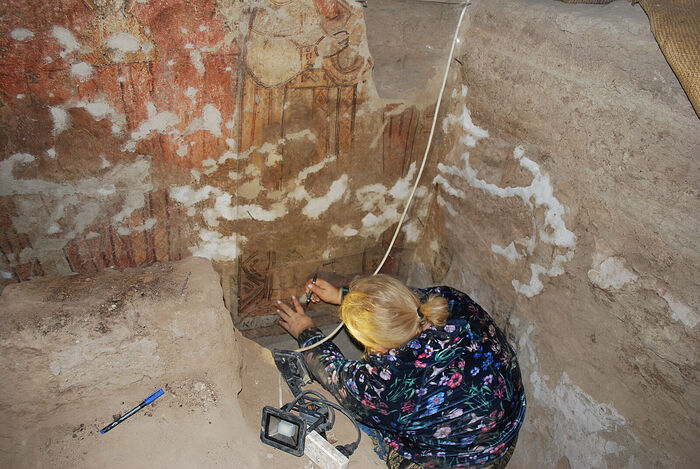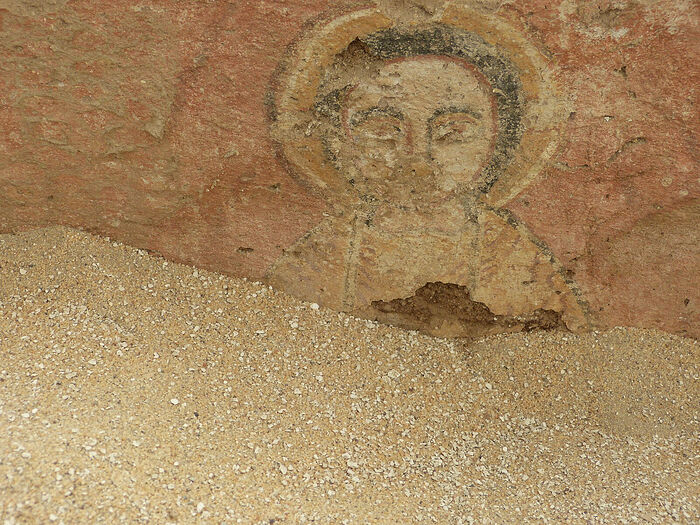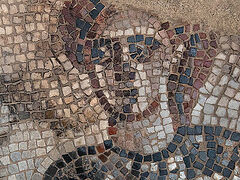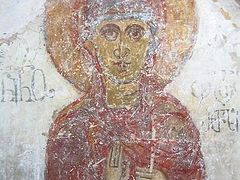Sudan, September 8, 2022
One of the better-preserved frescoes at the Lagia el Ga'ab church in Sudan is of Christ Emmanuel against the background of a standing figure—presumably the Mother of God, though the upper portion hasn’t survived.
The frescoes at the church date to the 9th-11th centuries, the heyday of Nubian painting.
The small Lagia el Ga’ab Church is located southwest of the 3rd Cataract, on the west bank of the Nile. Research on the frescoes has been carried out since 2018. The upper part of the church was originally uncovered by a team from the University of Khartoum, though it was recovered to protect it from the elements until experts could come in to study and preserve the find, reports Science in Poland.
Dr. Magdalena Łaptaś from the Cardinal Stefan Wyszyński University, who joined the excavations a year later explains the Christ Emmanuel fresco: “This type of representation is called Platytera ton uranon (more spacious than the heavens). It means that the womb of the Virgin Mary is greater than the heavens, containing the unlimited and eternal God.”
Despite considerable damage to the church over the past millennium, several frescoes and Greek inscriptions have survived. Nubia was converted to Orthodoxy by Byzantine missionaries just before 600 AD. Many beautifully decorated churches were then built.
According to Dr. Łaptaś, the Platytera type of icon was previously unknown in Nubian art, but “it confirms the strong Byzantine influence.”
The Mother of God is also flanked by two archangels, presumably Michael and Gabriel, whose heads are incomplete.
Dr. Łaptaś presented her research at the 24th International Congress of Byzantine Studies in Venice and Padua late last month.
Follow OrthoChristian on Twitter, Vkontakte, Telegram, WhatsApp, MeWe, and Gab!







